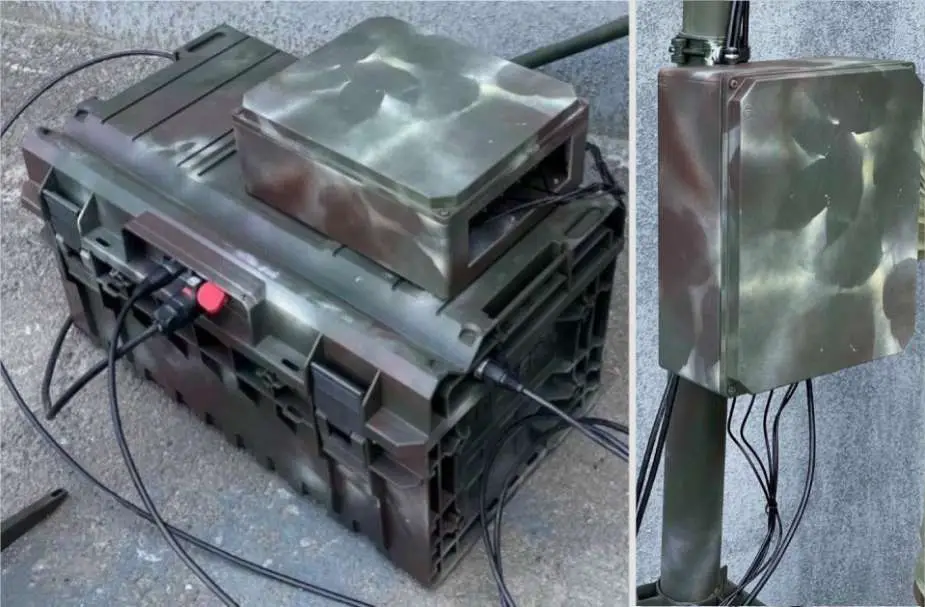Ukraine deploys new Falcons Eter compact electronic warfare system
On November 14, 2023, the Ukrainian Minister of Digital Transformation, Mykhailo Fedorov, announced the development of a compact radio-electronic intelligence system named "Eter", an electronic warfare (EW) system created within the framework of the Brave1 defense technology development project. It has been reported that Ukrainian units already have incorporated this system into their combat operations.
Follow Army Recognition on Google News at this link

The Eter system offers diverse kits designed to meet specific requirements, including those for infantry, stationary observation posts, and armored vehicles. (Picture source: Falcons)
The Eter system, manufactured by the Ukrainian startup Falcons, is a direction finder system designed to detect signals from enemy radio stations, drones, and electronic warfare systems. The primary purpose is to aid military personnel in identifying enemy electronic warfare systems and facilitating the safe deployment of drones along predetermined routes.
The Eter system operates at the tactical level, and this capability enables Ukrainian soldiers to swiftly identify the location of these signals, contributing to the creation of a detailed map of enemy radio activities. The modular design of the Eter system allows for the swift replacement of damaged components, and the estimated cost of manufacturing one Eter system is reported to be around $25,000.
The system is composed of three direction finders capable of wide-ranging coverage over a large radius. These finders are interconnected through an internet connection and software that processes and transmits data to operators and headquarters. The system can form into a large network, demonstrating its scalability and adaptability to different operational scenarios.
This system, detailed by the Falcons company's co-founder and marketing director Svitlana Braslavska, can locate devices emitting radio signals, including enemy communication devices, repeaters, electronic warfare devices, and drones. The flexibility of the system is highlighted by its various configurations, catering to both maneuverable groups and stationary applications, with suggestions for integration with armored vehicles.
Despite facing challenges such as financing problems, production scaling, and regulatory hurdles, Falcons remains committed to enhancing military capabilities through its innovative solutions. Braslavska noted the company's efforts to obtain operational permits, and Ukraine's efforts to streamline the process through initiatives like the Brave1 cluster, an initiative established by the Government of Ukraine to foster collaboration within the defense tech industry, offering organizational, informational, and financial support to defense tech projects.
Technologically, the Eter system employs the correlation-interferometric direction-finding method, providing up to 24 hours of autonomous operation. It is designed to be installed at a sufficient distance from the front line, allowing for the direction finding of communications, electronic warfare, and UAVs across various frequency bands. The system's quick installation and calibration, coupled with its independence from on-site personnel, make it a valuable asset in modern warfare scenarios.
The Eter system offers different kits tailored to specific needs, including a Hiking Eter weighing 55 kg for use by light and maneuverable groups, a Stationary Eter weighing 35 kg for stationary observation posts, and a Mobile Eter designed for mobile groups and installation on armored vehicles. Each kit includes antenna feeder systems, boxes with electronic equipment, telescopic masts, communication systems, and power supply options, demonstrating the versatility of the Eter system across different military applications.
The accuracy of the direction finding in the Eter system is a crucial characteristic, particularly in combat conditions. The system provides accurate direction finding across multiple frequency bands, ranging from 134–176 MHz to 1200–1500 MHz, showcasing its effectiveness in detecting and locating signals in diverse electronic warfare environments.




























